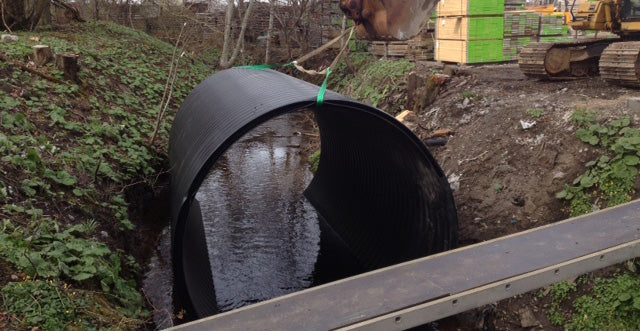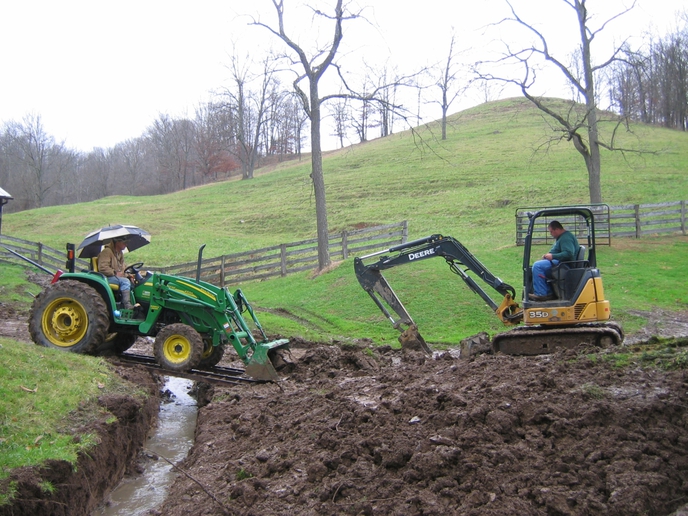Safe and Efficient Tree Removal Services
Wiki Article
Culvert Setup Made Easy: Step-by-Step Guide for Success
Mounting culverts may look like a straightforward task, but ensuring a successful end result calls for cautious planning and execution. From selecting the appropriate culvert size to integrating proper water drainage actions, each action in the installation procedure plays a critical function in the performance and longevity of the culvert system. By complying with a methodical technique and focusing on essential information, the installment can continue efficiently, lessening prospective concerns down the line. Stay tuned to uncover the vital steps and factors to consider that can make culvert setup a smooth and effective undertaking.Picking the Right Culvert Size
Picking the suitable culvert dimension is crucial for guaranteeing reliable water flow and architectural honesty in culvert installation tasks - Pad Construction. The dimension of the culvert directly influences the circulation capacity of water through the framework. A culvert that is as well small can bring about flooding and overflow, while one that is as well large might lead to lowered water speed, possibly causing debris accumulation and blockagesTo establish the right culvert size, variables such as the watershed location, height flow prices, and hydraulic performance need to be thoroughly thought about. Estimations based upon these parameters help in choosing a dimension that can properly take care of the anticipated water quantity while decreasing the risk of blockages and architectural failing.
It is necessary to get in touch with engineering guidelines and standards to make certain that the chosen culvert dimension fulfills the task needs and neighborhood regulations (Pad Construction). By picking the appropriate culvert dimension, task supervisors can maximize water circulation, protect against prospective problems, and improve the general effectiveness and long life of the culvert setup
Preparing the Setup Site
Reliable culvert installation necessitates precise prep work of the installation site to make sure optimum architectural assistance and functionality. Prior to commencing the installation process, it is important to remove the website of any kind of particles, vegetation, or blockages that can impede the culvert's placement.Moreover, it is necessary to consider factors such as dirt structure, groundwater levels, and environmental impacts when preparing the setup see post site. Carrying out a detailed website evaluation can assist recognize any potential obstacles or threats that might impact the culvert's performance. By taking the time to prepare the installation website appropriately, you can aid guarantee an effective culvert installment that fulfills architectural demands and makes certain long-term functionality.
Putting the Culvert Properly

The quality at which the check here culvert is put is vital for maintaining an appropriate incline for water circulation. A gradual slope assists stop merging and promotes reliable drain. Additionally, the culvert ought to be oriented properly to ensure that check here the inlet and outlet are in the appropriate places. This positioning is crucial for the culvert to function efficiently in handling water flow.
Backfilling and Condensing the Soil
Appropriate backfilling and compaction of the soil around the culvert is important to ensure security and avoid possible problems in the future. As soon as the culvert is correctly put, the next crucial step is to backfill the location around it with ideal product.Compaction helps in reducing the chances of settlement and ensures consistent support around the culvert. It is important to portable the dirt equally on all sides of the culvert to keep its architectural stability.
Proper backfilling and compaction not only give security to the culvert but additionally aid in avoiding dirt disintegration and preserving the long life of the culvert system.
Ensuring Appropriate Drain Combination
Incorporating efficient drain remedies plays a critical function in the general capability and longevity of culvert setups. Correct water drainage integration is important for handling water circulation, preventing disintegration, and guaranteeing the architectural stability of the culvert system. To attain this, it is essential to create a detailed drain plan that takes into consideration aspects such as the volume of water anticipated, the topography of the location, and the sort of soil existing.
In addition, including functions like erosion control measures, such as riprap or greenery, can better enhance the efficiency of the drain system. By very carefully planning and implementing these water drainage remedies, culvert installments can work successfully and withstand the examination of time.
Final Thought
To conclude, appropriate culvert setup is vital for keeping effective drain systems. By picking the right culvert dimension, preparing the setup website, placing the culvert correctly, backfilling and condensing the dirt, and ensuring correct drain integration, success can be accomplished. Following these actions will help ensure the long life and efficiency of the culvert, inevitably contributing to the total success of the drainage system.Report this wiki page